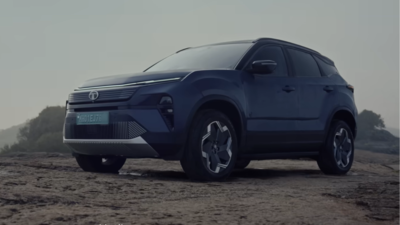ARTICLE AD BOX

Tata Motors is all set to launch the much anticipated
Tata Harrier EV
SUV in the Indian market tomorrow i.e., May 3, 2025. Ahead of its official launch, the company has released a new teaser video showcasing the electric SUV’s off-road capabilities. In the video titled
Elephant Rock Challenge
, the Tata Harrier. ev is seen tackling the well-known rocky formation set amidst Kerala’s scenic tea plantations. Located at an elevation of 3,937 feet, the ascent to Elephant Rock unfolds in three distinct stages, ending with a sharply rising slope near the summit.

The video also reveals a few key details of the upcoming Harrier EV, the SUV comes equipped with dual electric motors—one on each axle—enabling all-wheel drive. While Tata hasn’t disclosed full technical details yet, it has confirmed that the combined torque output will be more than 500Nm. The promotional video also highlights an off-road assist mode, which functions like a low-speed crawl feature with a preset pace for tricky terrain. Additionally, the SUV features a 360-degree camera system that includes a transparent bonnet view.

The Harrier EV will also feature multiple off-road modes—including Snow, Sand, and a dedicated Rock Crawl mode. In addition to these, there’s a dedicated Road mode and what seems to be a customizable driving mode. The EV also features separate buttons for Eco and Boost modes, and these can be accessed via the rotary drive selector on the centre console.

Other expected features include a 12.25-inch touchscreen infotainment system, a fully digital 10.25-inch instrument cluster, dual-zone climate control, wireless Android Auto/ Apple CarPlay, a premium sound system with a subwoofer, panoramic sunroof, powered tailgate, front ventilated seats, ambient lighting, connected car suite, vehicle-to-load (V2L) and vehicle-to-vehicle (V2V) charging capabilities and more. The official specifications and pricing will be announced tomorrow. In the video, the instrument cluster briefly shows a range estimate of 560km with 90 per cent battery remaining, so we expect a claimed range of up to 600 km in one full charge and could have a 90 kWh battery pack.



.png)
.png)
.png)
















 1 day ago
3
1 day ago
3









 English (US) ·
English (US) ·